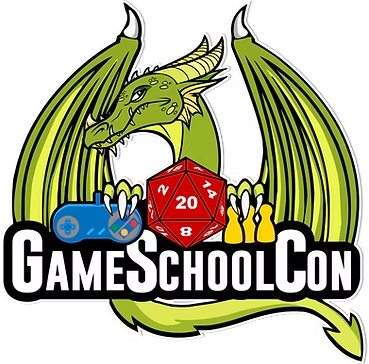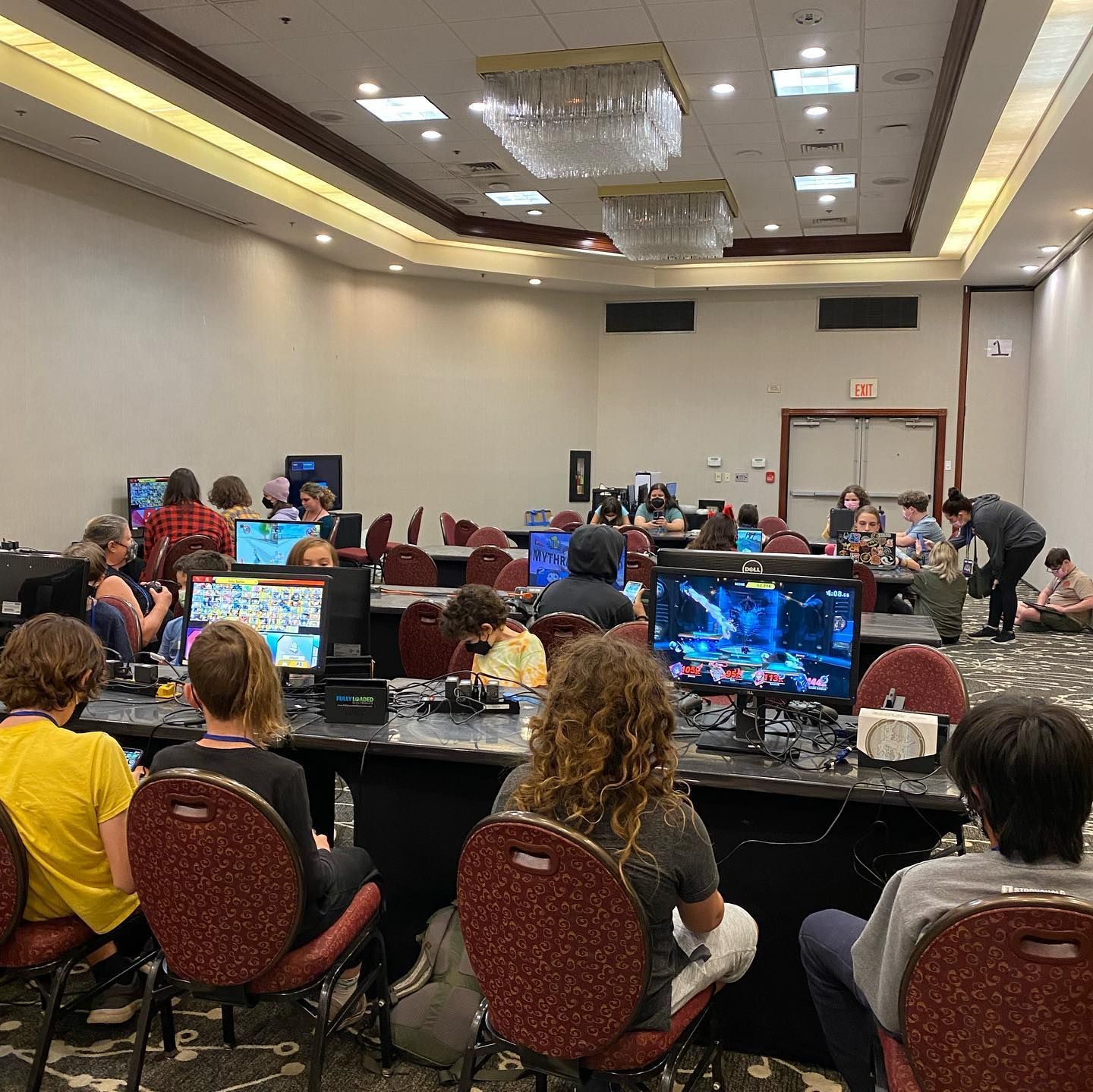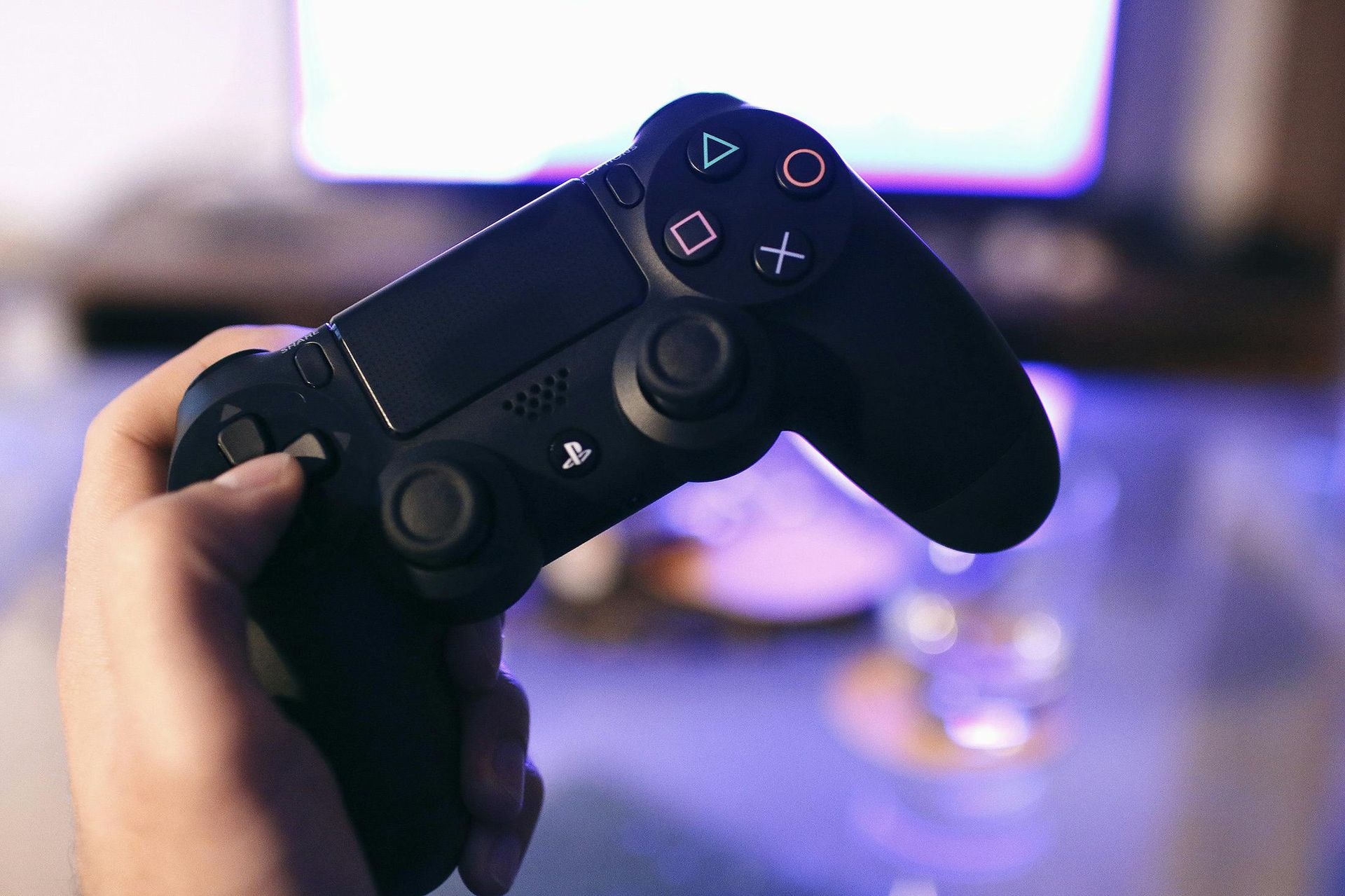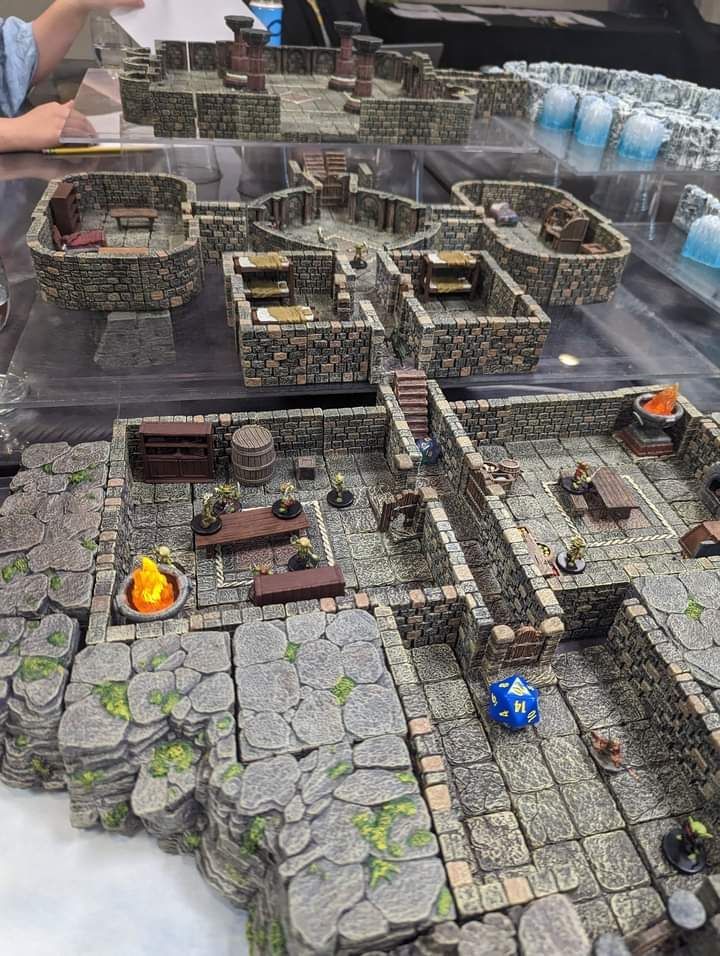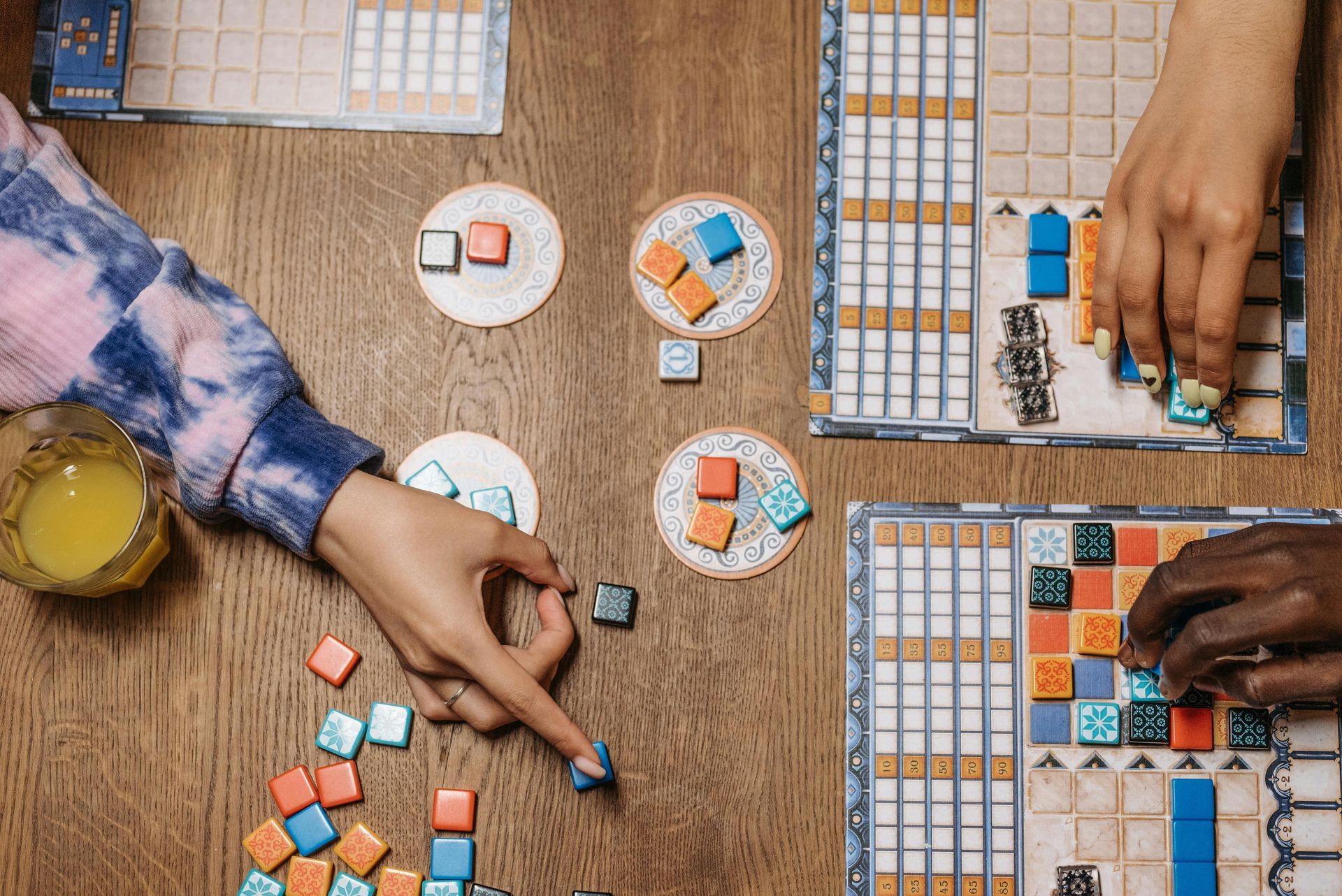February 19-22, 2026
Six Ways Games Have Been Secretly Teaching Your Kids Math All Along
Alex Cook • October 4, 2025
Many parents worry that gaming time is wasted time, but if you look closer, you’ll see your child is learning far more than it may seem. Hidden behind every button press and pixel is a lesson in logic, measurement, and problem-solving. Games that look purely entertaining often teach the same mathematical reasoning that schools strive to develop. Here are six ways games have been secretly teaching your kids math all along.
1. Frame Data: Street Fighter
When parents see their kids play the digital equivalent of rock-em-sock-em robots, they are quick to write it off as mindless violence. But the truth of the matter is, fighting games are very numbers-intensive if you want to win.
This is most obvious in “frame data,” aka, the numbers tied to each attack. A “frame” is how many times the screen updates, typically at 60 frames per second. Therefore, if a move occurs on frame 3, it is faster than a move that happens on frame 4. But what if you hit the opponent? Well, one person gets to act first, but who?
You can find the answer by running the numbers. Simply take how long the opponent was stunned for after the hit (hitstun), remove the time you were stunned after a hit (hitpause), and the remaining frames of the move you used (endlag). The result is how many extra frames you have to act! Oh, by the way, all of this changes if you hit the move, or if it was blocked, or if you execute the move differently, or if many other factors are taken into account.
Now do all that in half a second. It might seem impossible, but if you're kid is an avid fighting game player, this is all second nature. Not so mindless now, huh?
2. Probability: Magic: The Gathering
Magic: The Gathering has been a force in the trading card game scene for decades now. Known for its competition and theory, which other card games have copied, Magic is everywhere, both as the game and its influence on other trading card games. But the first person to ask, “Hey, how could I make my deck the best I could?” was zoning out in a calculus class. In that class, Jay Schneider discovered the concept of “the mana curve.”
In Magic: The Gathering, each card you play costs mana. You can get mana through lands, which you can play one off a turn, and stay on the field. Effectively, this means (assuming you draw enough lands), you gain one more mana to play every turn. Unspent mana doesn’t get saved for later; if you don’t spend all the mana you can each turn, it's gone. So the question becomes “how can I spend all of my mana every turn?” This is where the mana curve comes into play.
The mana curve is a graph of how many cards you have of each cost. The goal of the graph is to maximize your chances of spending all of your mana each turn and decrease the chance of spending every single card. This plays a crucial role in deck building, as understanding your deck's mana curve can let you know when the deck is strongest, what cards should or should not be played, or if your deck needs to play different types of lands or ways to get mana. This gets even more complicated in the ever-popular “commander” format, with 100 cards in every deck and one card you can always play, if you want to win. Understanding the probabilities of drawing each cost of a card is crucial to planning out your future turns. Every card game is a probability challenge waiting to be solved.
3. Measurements and Blueprinting: Minecraft
If you’ve ever walked in on your child carefully constructing a sprawling castle or a working roller coaster in Minecraft, you’ve seen a little engineer in action. Behind the creativity lies a lot of geometry, measurement, and architectural reasoning — the same math skills used by real builders and designers.
Every block in Minecraft is a perfect cube, which means everything in the game is built on units of measurement. When your child plans a structure — say, a 10x10x10 tower — they’re using multiplication, area, and volume without even realizing it. They measure, align, and blueprint their ideas, sometimes even sketching them out on paper before building.
Then there’s Redstone, the game’s wiring system, which introduces logic circuits, switches, and inputs — essentially an introduction to electrical engineering and computer logic. Players learn cause and effect, create feedback loops, and optimize designs for efficiency — the same kind of thinking that powers robotics and coding.
Every placement of a block requires spatial reasoning and precise counting. Whether they’re recreating the Eiffel Tower or engineering an automated farm, your child is practicing applied math, geometry, and design thinking in one of the most engaging digital sandboxes ever created.
4. Calculations: Pokémon
Pokémon might seem like a simple “rock-paper-scissors” game of cute creatures, but every battle hides a mountain of math beneath the surface. When your child calculates whether their Charizard can knock out a Blastoise, they’re performing damage calculations — a real formula used in the games that blends algebra, probability, and logic.
The formula (simplified) looks like this: Damage = (((2 × Level / 5 + 2) × Power × Attack / Defense) / 50) + 2, multiplied by a handful of modifiers like type advantage, random variation, and whether the attack was critical.
Sound complicated? That’s because it is. But players learn to internalize it intuitively. They start predicting outcomes, for example, “If my Pikachu uses Thunderbolt, will it one-shot that Gyarados?” If you did? Great! If you didn’t? What might you have not considered? Was your damage too low, their defense too high? After enough experimentation, the formulas fall to the back of the mind as the numbers become second nature.
As you get more advanced, knowing exactly what moves the needle is very crucial. Each Pokémon’s stats apply to the formula slightly differently, so knowing the multipliers, such as “Same Type Attack Bonus” or how hidden stats like EVs and IVs benefit your pokémon, will be the difference-makers.
I can’t promise your kid could tell you the formula off-hand, but as they play, they are encouraged to engage with these systems more and more. Pokémon, as all RPGs are, is a game of math.
5. Game Theory: Tic-Tac-Toe
“A strange game. The only winning move is not to play.” That famous line from Wargames captures the mathematical truth of Tic-Tac-Toe perfectly. Once both players understand the strategy, every game ends in a draw.
When kids first play Tic-Tac-Toe, they experiment: “If I go here, will they block me?” Over time, they begin to recognize patterns, predict outcomes, and develop strategies that minimize losses. In other words, they’re learning optimal decision-making; how to choose the best move when an opponent’s choices matter too.
Game theory is evident everywhere in real life, but for many kids, Tic-Tac-Toe is their first introduction to it. It starts with them playing and losing. Over, and over, and over. However, as you play, you either learn to strategize effectively or are taught “the strategy,” which leads to Tic-Tac-Toe being a solved game. It’s a point of learning for every child. If two people act logically, you can predict a specific outcome every time.
Tic-Tac-Toe is simple, but kids will learn that they can apply it to every game they play. Connect 4, Chess, Call of Duty; if you have an opponent, you can predict their actions by using logic, the very core of game theory..
When you strip away the graphics and storylines, games are built on systems — and systems are built on math. Whether your child is battling, building, or planning their next move, they’re engaging with patterns, formulas, and critical thinking. So next time you see them gaming, take heart: they’re not avoiding math homework — they’re living it, one game at a time.
Want more ways to connect play and learning?
Join us at GameSchoolCon, where families discover how games of all kinds spark real-world skills.
Written by Alex Cook for GameSchoolCon. Alex is a grown gameschooler, writer, and speaker. He’s a senior in college studying Strategic Communications and loves exploring how games, media, and storytelling shape the way we connect and learn.
